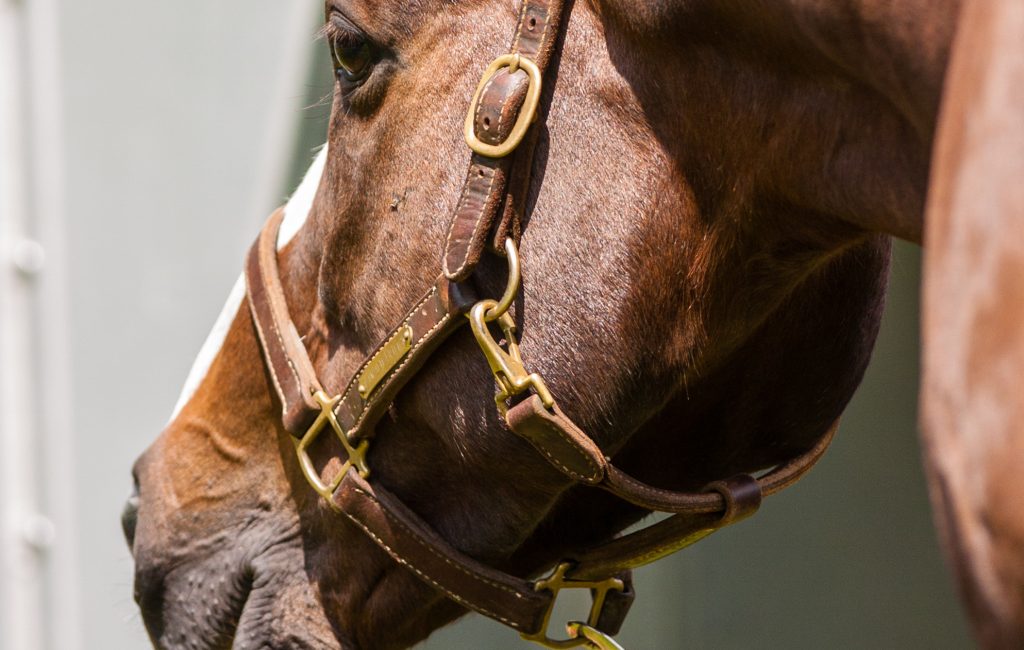
To learn how to take your horse’s pulse under his jaw, understanding what a pulse is is the first step. A pulse is the rhythmic contraction and expansion of an artery due to the surge of blood from the beating of your horse’s heart. Taking his pulse measures the rate and strength of his heartbeat. A faster-than-normal pulse indicates exertion, excitement or system-wide stress from conditions such as colic, fever or other trauma.
The normal pulse rate range for adult horses (ages 4-20) is 30-40 beats per minute (bpm), with an average of 36 for Thoroughbreds and warmbloods. Drafts and Quarter Horse types often average a little lower: between 32-34 bpm. A foal’s pulse ranges from 70-120 bpm, and yearlings from 45-50 bpm. Following moderate exercise, a horse’s pulse rate should increase to 180-240 bpm. It should fall to 60 bpm within 10 to 20 minutes of rest, then slowly return to normal.
Taking your horse’s pulse when he’s healthy will give you a baseline to know when he’s not. To find your horse’s average resting pulse rate, take it daily or every other day for at least a week using the method I describe below. Add the results and divide by the number of times you took the pulse to get an average. The reason for doing this is because exercise, environmental temperatures, stress, excitement or physical condition can affect the pulse rate.
1. Standing at your horse’s left side, use your fingertips to feel the space along your horse’s jawbone under his cheek for a cordlike structure about the thickness of a pencil. It is located directly below and slightly behind the front corner of your horse’s eye. This is his transverse facial artery, and you will feel it move around under his skin.
2. Curl your middle and ring fingers toward your palm, gently pressing the cord against the inside of his left jawbone. (Note: Do not use your thumb–you will feel your own pulse instead of your horse’s!)
3. Once you feel his pulse, count the number of beats you feel while looking at the second hand on your watch to note when 15 seconds has elapsed. Multiply the number of pulses you count by four. This will give you his total bpm.
To learn how to take your horse’s digital pulse below his ankle joint, click here.
Dr. Javier Donatelli, DVM, grew up in Argentina training young horses and was a champion rodeo rider. He graduated from the University of La Plata in his home country. He has been the owner of Javier Donatelli Equine Veterinarian, LLC, since 2008 and is based out of Poolesville, Maryland.










